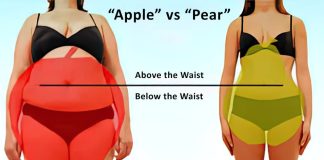Last Updated on November 12, 2023
Sixteen weeks of therapy with diets high in omega-3 fatty acids from fatty fish diminished the frequency and severity of complications in folks with frequent migraines, in accordance with a research funded by the Nationwide Middle for Complementary and Integrative Well being, a part of the Nationwide Institutes of Well being, and carried out on the College of North Carolina at Chapel Hill. The research, which was partially supported by the Nationwide Institute on Getting older and the Nationwide Institute on Alcohol Abuse and Alcoholism, was printed within the BMJ.
The kinds of fatty acids that individuals get from meals could play a task in selling or stopping migraine. Fashionable industrialized diets are usually low within the omega-3 fatty acids eicosapentaenoic acid (EPA) and docosahexaenoic acid (DHA), that are present in seafood, and excessive within the omega-6 fatty acid linoleic acid, which is present in vegetable oils. These fatty acids are transformed within the physique into oxylipins that affect ache. Oxylipins derived from EPA and DHA could cut back ache, whereas these derived from linoleic acid could improve it.
On this research, 182 individuals who had migraines on 5 to twenty days every month have been randomly assigned to devour certainly one of three diets for 16 weeks: a food plan with elevated EPA and DHA and a linoleic acid stage the identical as the typical U.S. consumption; a food plan with elevated EPA and DHA and diminished linoleic acid; or a management food plan with ranges of EPA, DHA, and linoleic acid the identical as common U.S. intakes. The research used a modified double-blind design; the dietitian who recommended the members knew which food plan every particular person was assigned to, however the different research workers and the members didn’t.
Examine members accomplished the Headache Influence Take a look at (HIT-6), a questionnaire that measures the affect of complications on high quality of life, in the beginning and finish of the 16-week research. The researchers measured ranges of 17-hydroxy docosahexaenoic acid (17-HDHA), a precursor of pain-reducing oxylipins, in samples of blood plasma from the members. The members additionally saved a each day headache diary.
Contributors who obtained both of the modified diets had fewer whole hours of headache, fewer hours of moderate-to-severe headache per day, and fewer days with headache per thirty days, in comparison with members on the management food plan. Results on HIT-6 scores weren’t statistically important. Contributors on the food plan with elevated EPA and DHA and decreased linoleic acid had fewer days with headache per thirty days than these on the food plan with elevated EPA and DHA and common linoleic acid. Plasma 17-HDHA ranges elevated in members on the modified diets, in contrast with the management food plan.
The outcomes of the research point out that an elevated consumption of the omega-3 fatty acids EPA and DHA can cut back the frequency and severity of complications and that lowering consumption of the omega-6 fatty acid linoleic acid could result in extra enhancement. Nevertheless, high quality of life didn’t enhance considerably with the food plan modifications. The rise in 17-HDHA means that adjustments in oxylipins could have performed a task within the discount in complications.
The researchers who carried out the research mentioned that it gives a biologically believable demonstration that aches may be handled via dietary alterations, thus opening the door to new approaches for managing chronic aches.
Reference
- Ramsden CE, Zamora D, Faurot KR, et al. Dietary alteration of n-3 and n-6 fatty acids for headache reduction in adults with migraine: randomized controlled trial. BMJ. 2021;374:n1448.







